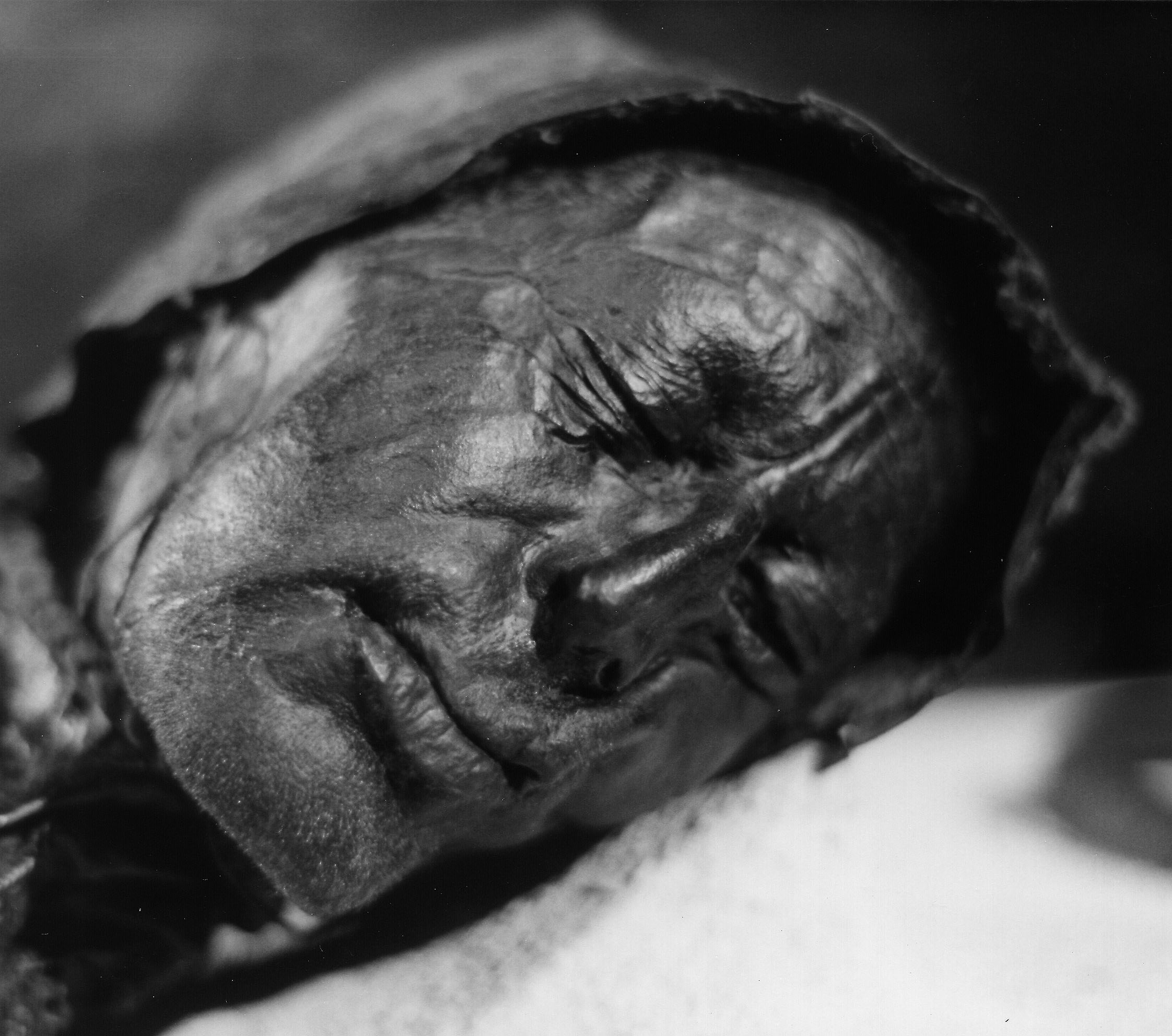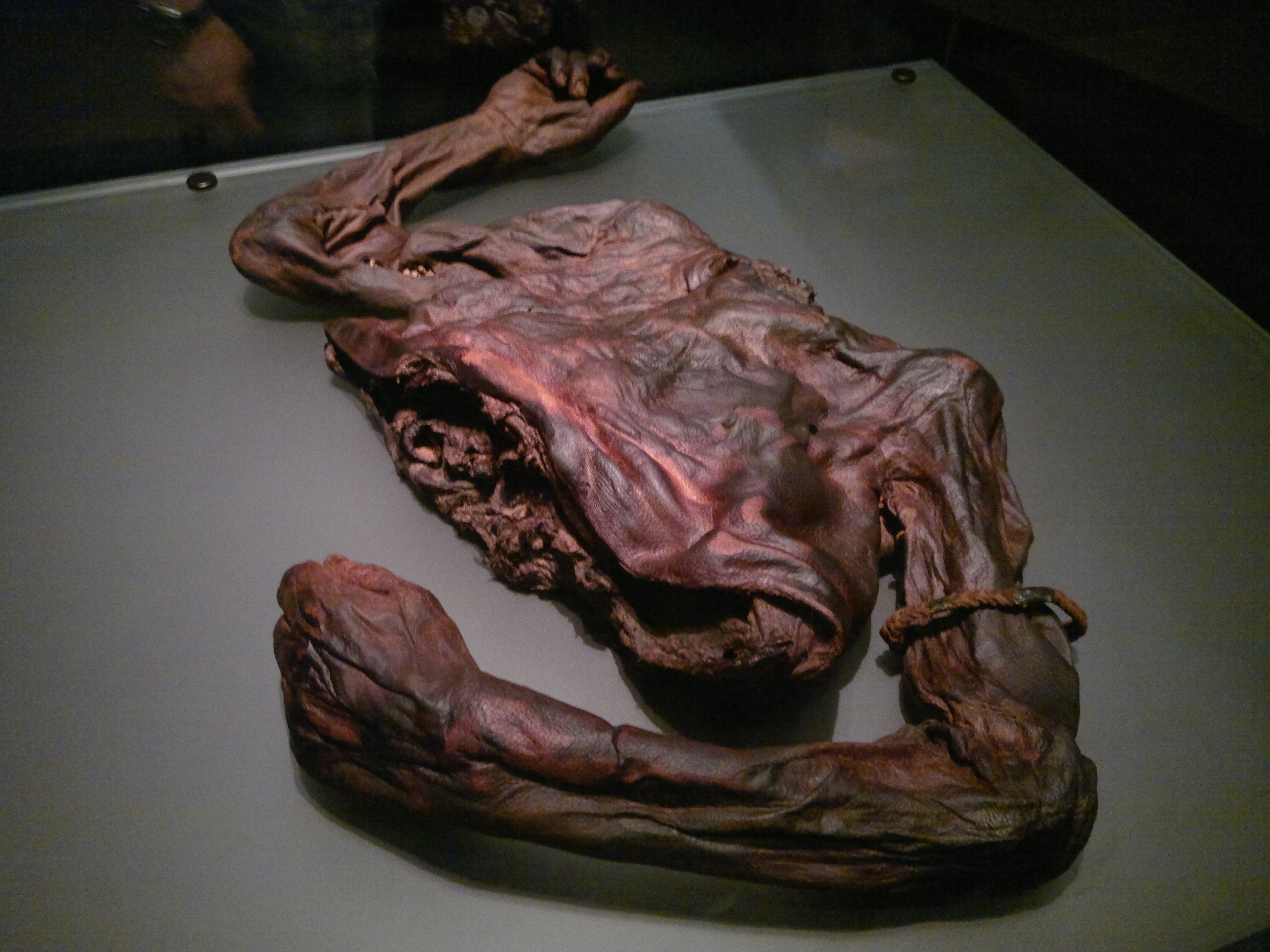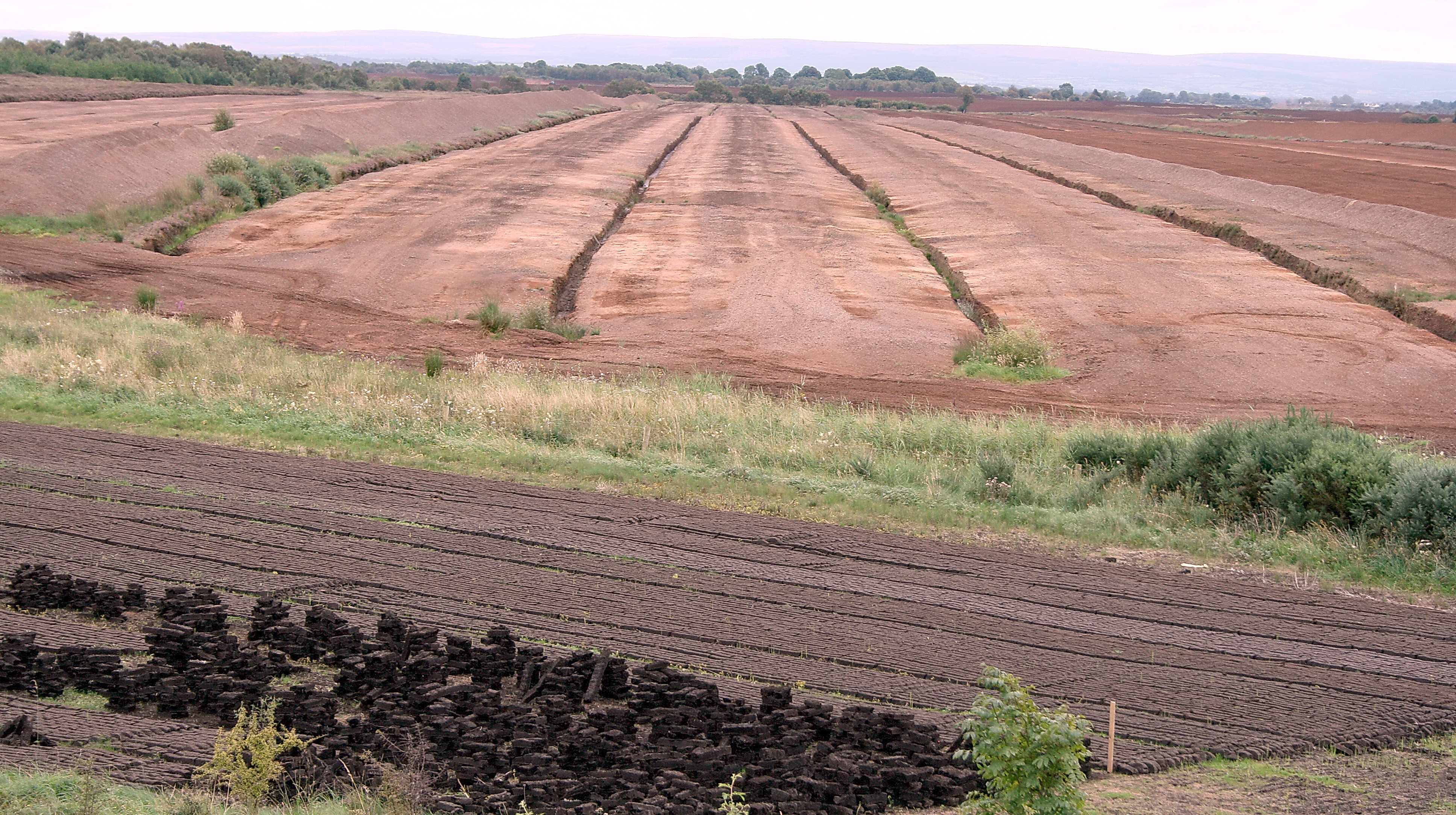|
Cashel Man
Cashel Man is a bog body found near Cashel in County Laois, Ireland, on 10 August 2011. The body was a young adult male, around 20–25,Hart, Edward, dir. "Ghosts of Murdered Kings." NOVA. Prod. Edward Hart and Dan McCabe. PBS. 29 Jan. 2014. Television. who had been intentionally covered with peat after death. The crouched figure was recovered after being damaged by a milling machine in 2011. The head and left arm were presumed destroyed by the peat harvester until later recovered. Radiocarbon dating places the man as having died around 2000 BC, making him one of the oldest bog bodies in Europe. Position at discovery Cashel Man was found lying on his right side with his legs tightly flexed. The body was in the middle of the bog, oriented north-to-south with his head pointing south. There was not much other information available because the head, neck and left arm were all removed from the body by the peat Peat is an accumulation of partially Decomposition, decayed veg ... [...More Info...] [...Related Items...] OR: [Wikipedia] [Google] [Baidu] |
Bog Body
A bog body is a human cadaver that has been naturally mummified in a peat bog. Such bodies, sometimes known as bog people, are both geographically and chronologically widespread, having been dated to between 8000 BC and the Second World War. Fischer 1998. p. 237. The unifying factor of the bog bodies is that they have been found in peat and are partially preserved; however, the actual levels of preservation vary widely from perfectly preserved to mere skeletons. Van der Sanden 1996. p. 7. Unlike most ancient human remains, bog bodies often retain their skin and internal organs due to the unusual conditions of the surrounding area. Combined, highly acidic water, low temperature, and a lack of oxygen preserve but severely tan their skin. While the skin is well-preserved, the bones are generally not, due to the dissolution of the calcium phosphate of bone by the peat's acidity. The acidic conditions of these bogs allow for the preservation of materials such as skin, hair, nails, ... [...More Info...] [...Related Items...] OR: [Wikipedia] [Google] [Baidu] |
County Laois
County Laois ( ; ) is a county in Ireland. It is part of the Eastern and Midland Region and in the province of Leinster. It was known as Queen's County from 1556 to 1922. The modern county takes its name from Loígis, a medieval kingdom. Historically, it has also been known as County Leix. Laois County Council is the local authority for the county, and is based in Portlaoise. At the 2022 census, the population of the county was 91,657, an increase of 56% since the 2002 census. History Prehistoric The first people in Laois were bands of hunters and gatherers who passed through the county about 8,500 years ago. They hunted in the forests that covered Laois and fished in its rivers, gathering nuts and berries to supplement their diets. Next came Ireland's first farmers. These people of the Neolithic period (4000 to 2500 BC) cleared forests and planted crops. Their burial mounds remain in Clonaslee and Cuffsborough. Starting around 2500 BC, the people of the Bronze Age lived ... [...More Info...] [...Related Items...] OR: [Wikipedia] [Google] [Baidu] |
Before Christ
The terms (AD) and before Christ (BC) are used when designating years in the Gregorian calendar, Gregorian and Julian calendar, Julian calendars. The term is Medieval Latin and means "in the year of the Lord" but is often presented using "our Lord" instead of "the Lord", taken from the full original phrase "", which translates to "in the year of our Lord Jesus Christ". The form "BC" is specific to English language, English, and equivalent abbreviations are used in other languages: the Latin (language), Latin form, rarely used in English, is (ACN) or (AC). This calendar era takes as its epoch (date reference), epoch the traditionally reckoned year of the annunciation, conception or Nativity of Jesus, birth of Jesus. Years ''AD'' are counted forward since that epoch and years ''BC'' are counted backward from the epoch. There is no year zero in this scheme; thus the year AD 1 immediately follows the year 1 BC. This dating system was devised in 525 by Dionysius Exiguus but was ... [...More Info...] [...Related Items...] OR: [Wikipedia] [Google] [Baidu] |
Peat
Peat is an accumulation of partially Decomposition, decayed vegetation or organic matter. It is unique to natural areas called peatlands, bogs, mires, Moorland, moors, or muskegs. ''Sphagnum'' moss, also called peat moss, is one of the most common components in peat, although many other plants can contribute. The biological features of sphagnum mosses act to create a habitat aiding peat formation, a phenomenon termed 'habitat manipulation'. Soils consisting primarily of peat are known as histosols. Peat forms in wetland conditions, where flooding or stagnant water obstructs the flow of oxygen from the atmosphere, slowing the rate of decomposition. Peat properties such as organic matter content and saturated hydraulic conductivity can exhibit high spatial heterogeneity. Peatlands, particularly bogs, are the primary source of peat; although less common, other wetlands, including fens, pocosins and peat swamp forests, also deposit peat. Landscapes covered in peat are home to sp ... [...More Info...] [...Related Items...] OR: [Wikipedia] [Google] [Baidu] |
National Museum Of Ireland – Archaeology
The National Museum of Ireland – Archaeology (, often known as the "NMI") is a branch of the National Museum of Ireland located on Kildare Street in Dublin, Ireland, that specialises in Irish and other antiquities dating from the Stone Age to the Late Middle Ages. The museum was established under the Dublin Science and Art Museum Act 1877 ( 40 & 41 Vict. c. ccxxxiv). Before, its collections had been divided between the Royal Dublin Society and the Natural History Museum on Merrion Street. The museum was built by the father and son architects Thomas Newenham Deane and Thomas Manly Deane. The rotunda at the front of the National Museum matches that of the National Library of Ireland, which face each other across the front of Leinster House. The NMI's collection contains artifacts from prehistoric Ireland including bog bodies, Iron and Bronze Age objects such as axe heads, swords and shields in bronze, silver and gold, with the earliest dated to c. 7000 BC. It holds the world ... [...More Info...] [...Related Items...] OR: [Wikipedia] [Google] [Baidu] |
Sacrifice
Sacrifice is an act or offering made to a deity. A sacrifice can serve as propitiation, or a sacrifice can be an offering of praise and thanksgiving. Evidence of ritual animal sacrifice has been seen at least since ancient Hebrews and Greeks, and possibly existed before that. Evidence of ritual human sacrifice can also be found back to at least pre-Columbian civilizations of Mesoamerica as well as in European civilizations. Varieties of ritual non-human sacrifices are practiced by numerous religions today. Terminology The Latin term ''sacrificium'' (a sacrifice) derived from Latin ''sacrificus'' (performing priestly functions or sacrifices), which combined the concepts ''sacra'' (sacred things) and ''facere'' (to make, to do). The Latin word ''sacrificium'' came to apply to the Christian eucharist in particular, sometimes named a "bloodless sacrifice" to distinguish it from blood sacrifices. In individual non-Christian ethnic religions, terms translated as "sacrifice" ... [...More Info...] [...Related Items...] OR: [Wikipedia] [Google] [Baidu] |
Old Croghan Man
Old Croghan Man (''Seanfhear Chruacháin'' in Irish) is a well-preserved Irish Iron Age bog body found in June 2003. The remains are named after Croghan Hill, north of Daingean, County Offaly, near where the body was found. The find is on display in the National Museum of Ireland in Dublin. Old Croghan Man was found three months after a similar find, now known as Clonycavan Man, in County Meath County Meath ( ; or simply , ) is a Counties of Ireland, county in the Eastern and Midland Region of Republic of Ireland, Ireland, within the Provinces of Ireland, province of Leinster. It is bordered by County Dublin to the southeast, County .... Life The man is calculated (based on his arm span) to have stood approximately between and tall, which is considered to be exceptionally tall for the period when he lived. The man's apparently manicured nails led to speculation that he was not someone who engaged in manual labour, and possibly therefore of high status. His la ... [...More Info...] [...Related Items...] OR: [Wikipedia] [Google] [Baidu] |
Clonycavan Man
Clonycavan Man is the name given to a well-preserved Iron Age bog body found in Clonycavan, Ballivor, County Meath, Ireland in March 2003. The body shows signs of having been murdered. Theories around the meanings and manner of his death vary. The theories include, rituals/sacrifice or murder but no definite motives have been established. Condition and characteristics Only Clonycavan Man's head and torso are preserved. He was found in a modern peat harvesting machine, which was possibly responsible for the severing of his lower body. The scientific study of Clonycavan Man's hair has shed light on his diet leading up to his death. His diet was rich in vegetables and proteins, which indicates that he may have been killed during the warmer summer months of the year. Clonycavan Man was also fairly young at the time of his death; he is believed to have been in his early twenties. The most distinguishing feature of the man was his hairstyle, which was raised upon his head with the ... [...More Info...] [...Related Items...] OR: [Wikipedia] [Google] [Baidu] |
Anaerobic Lagoon
An anaerobic lagoon or manure lagoon is a man-made outdoor earthen basin filled with animal waste that undergoes anaerobic respiration as part of a system designed to manage and treat refuse created by concentrated animal feeding operations (CAFOs). Anaerobic lagoons are created from a manure slurry, which is washed out from underneath the animal pens and then piped into the lagoon. Sometimes the slurry is placed in an intermediate holding tank under or next to the barns before it is deposited in a lagoon. Once in the lagoon, the manure settles into two layers: a solid or sludge layer and a liquid layer. The manure then undergoes the process of anaerobic respiration, whereby the volatile organic compounds are converted into carbon dioxide and methane. Anaerobic lagoons are usually used to pretreat high strength industrial wastewaters and municipal wastewaters. This allows for preliminary sedimentation of suspended solids as a pretreatment process. Anaerobic lagoons have been show ... [...More Info...] [...Related Items...] OR: [Wikipedia] [Google] [Baidu] |
Bord Na Móna
Bord na Móna (; English: "The Peat Board") is a semi-state company in Ireland, created in 1946 by the Turf Development Act 1946. The company began developing the peatlands of Ireland with the aim to provide economic benefit for Irish Midland communities and achieve security of energy supply for the recently formed Irish Republic. The development of peatlands involved the mechanised harvesting of peat, which took place primarily in the Midlands of Ireland. Over the years, Bord na Móna has expanded and diversified its portfolio of businesses to include biomass procurement and supply, power generation (peat based and renewable), waste recovery, domestic fuel products and professional and consumer horticulture products. In 2015, the company announced that the harvesting of peat for power generation is to be "phased out" by 2030, at which point the company would complete its transition to new sustainable businesses located across its bogs and landholding. The new sustainable busin ... [...More Info...] [...Related Items...] OR: [Wikipedia] [Google] [Baidu] |
2011 Archaeological Discoveries
Eleven or 11 may refer to: *11 (number) * One of the years 11 BC, AD 11, 1911, 2011 Literature * ''Eleven'' (novel), a 2006 novel by British author David Llewellyn *''Eleven'', a 1970 collection of short stories by Patricia Highsmith *''Eleven'', a 2004 children's novel in The Winnie Years by Lauren Myracle *''Eleven'', a 2008 children's novel by Patricia Reilly Giff *''Eleven'', a short story by Sandra Cisneros Music *Eleven (band), an American rock band * Eleven: A Music Company, an Australian record label *Up to eleven, an idiom from popular culture, coined in the movie ''This Is Spinal Tap'' Albums * ''11'' (The Smithereens album), 1989 * ''11'' (Ua album), 1996 * ''11'' (Bryan Adams album), 2008 * ''11'' (Sault album), 2022 * ''Eleven'' (Harry Connick, Jr. album), 1992 * ''Eleven'' (22-Pistepirkko album), 1998 * ''Eleven'' (Sugarcult album), 1999 * ''Eleven'' (B'z album), 2000 * ''Eleven'' (Reamonn album), 2010 * ''Eleven'' (Martina McBride album), 2011 * ''Eleven'' (Mr Fogg ... [...More Info...] [...Related Items...] OR: [Wikipedia] [Google] [Baidu] |
Bog Bodies
A bog body is a human cadaver that has been Natural mummy, naturally mummified in a Bog, peat bog. Such bodies, sometimes known as bog people, are both geographically and chronologically widespread, having been dated to between 8000 BC and the Second World War.#Fis98, Fischer 1998. p. 237. The unifying factor of the bog bodies is that they have been found in peat and are partially preserved; however, the actual levels of preservation vary widely from perfectly preserved to mere skeletons.#San96, Van der Sanden 1996. p. 7. Unlike most ancient human remains, bog bodies often retain their skin and internal organ (anatomy), organs due to the unusual conditions of the surrounding area. Combined, highly acidic water, low temperature, and a lack of oxygen preserve but severely Tanning (leather), tan their skin. While the skin is well-preserved, the bones are generally not, due to the dissolution of the calcium phosphate of bone by the peat's acidity. The acidic conditions of these bogs ... [...More Info...] [...Related Items...] OR: [Wikipedia] [Google] [Baidu] |






